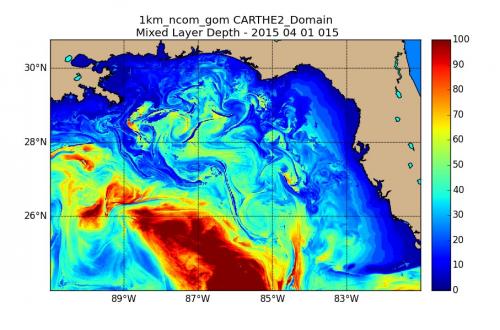Abstract's details
Sea surface height observational capabilities: from mesoscale to submesoscale
Event: 2015 Ocean Surface Topography Science Team Meeting
Session: Science II: Mesoscale and sub-mesoscale ocean processes: current understanding and preparation for SWOT
Presentation type: Oral
The Surface Water / Ocean Topography (SWOT) mission will change our perceptions of the ocean, and this can be shown by examining how sea surface height (SSH) has been used in the past, the processes expected to be observed by SWOT and the fundamentally different dynamical relations. This motivates research at the present to understand the implication of the SWOT data in the domain of previously unresolved ocean features. Historically, because of the relatively sparse spatial sampling, SSH observations have been related to mesoscale eddy circulations in the ocean. To first order, mesoscale eddies are in geostrophic and hydrostatic balance. The eddy signature in SSH is due to the thermocline depth variations changing heat content in the water column and reflected in steric expansion. This understanding has been exploited and enabled mesoscale ocean predictions from global scales such as the Global Ocean Forecast System (GOFS) to the reloctable forecast system (RELO) to the coupled ocean / atmosphere mesoscale prediction system (COAMPS). SWOT will reveal submesoscale eddies that are not in geostrophic balance, and their vertical extent is mainly in the mixed layer rather than to the deep thermocline. High resolution model experiments are used to estimate relationships between the surface height signatures and subsurface structures due to mesoscale and submesoscale eddies. Understanding these relationships and their role in accurate monitoring of submesoscale dynamics is critical to enabling SWOT observations to be used in ocean forecast systems in the future. The results from a 1 km resolution ocean model covering the Gulf of Mexico provide the 3D structure representing both mesoscale and submesoscale to begin to understand the correlations throughout the water column. Both scales have effects on mixed layer depth as shown in the figure below. The initial examinations provide insight to the relation between SSH and its spatial gradients to the underlying temperature, salinity and velocity structure within the mixed layer and at the deeper thermocline depths. One key problem for using SWOT involves separating mesoscale and submesoscale signal from the SSH observations alone. The answer to this problem is critical to relate the surface observations to the subsurface structure. The model-derived SSH correlations at the thermocline depth and within the mixed layer can lend insight to horizontal length scales to classify mesoscale and submesocale features.

Contribution: SC2-01-jacobs_OSTST.pdf (pdf, 4050 ko)
Back to the list of abstract